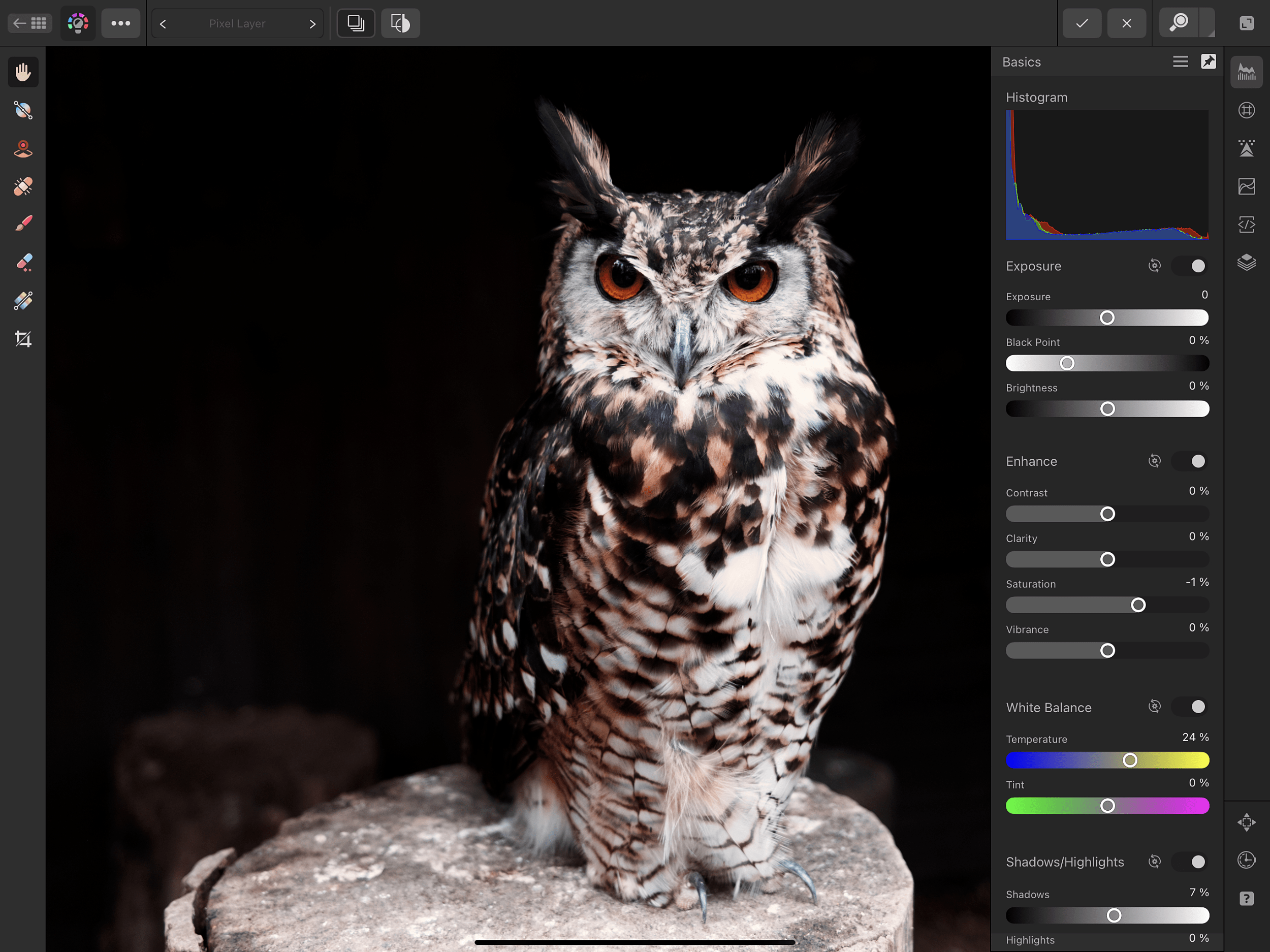Working in Develop Persona

If a supported raw file format is opened, it will automatically display in Develop Persona. You can then process the image using the dedicated adjustments, Studio panels and tools. You can use non-destructive development which lets you redevelop the original raw image at any time without affecting the original file.
Develop Persona gives you access to the following:
- Output options that will retain your original raw image as a non-destructive raw layer, with the raw file either embedded (copied into your document) or linked (left in its original file location).
- Develop Assistant to control behaviour on loading the RAW image:
- choice of RAW engine for RAW processing
- enable/disable automatic lens correction (SerifLabs RAW engine only)
- enable/disable automatic noise reduction
- enable/disable automatic tonal adjustment (curves)
- enable/disable automatic exposure adjustment
- Tonal adjustments using the Basic and Tones panels.
- Sharpening and Noise adjustments using the Details panel.
- Lens correction adjustments using the Lens panel.
- Overlays for applying adjustments to specific brushed image regions.
- Crop Tool for cropping your image.
- Blemish Removal Tool for correcting image imperfections.
- Metadata panel for GPS Location and A/F region display.
At any point while working with an image or any selected pixel layer, you can switch to Develop Persona to make use of its unique features.
Choosing between RAW engines
The Develop Assistant provides a choice between Apple (Core Image RAW) and Serif Labs engines for processing RAW images.
Apple's engine provides the benefits of predetermined behaviours for demosaicing, lens correction, noise reduction, cropping and more.
Serif Labs' engine allows for greater manual configuration. You can specify luma and chroma noise reduction separately or disable noise reduction altogether, override lens correction, and benefit from superior demosaicing.
Apple's engine crops to whatever aspect ratio was selected in camera and so was written into the image's metadata, even if the camera sensor's aspect ratio is different. Data outside of the crop area may be removed during RAW processing. The Serif Labs engine doesn't destructively crop images, so all sensor data remains available.
Split view options
There are a variety of split view options available in Develop Persona's View Tool which give you the opportunity of seeing how your processed image compares to the original raw data.
Syncing
While applying adjustments, you can update the 'Before' and 'After' view to give you a more focused representation of the applied changes. Rather than comparing the processed image with the original raw data, you can sync the views so 'Before' adopts the current applied adjustments. The 'After' view continues to update as more adjustments are made.
Show Clipping
An incorrect level of exposure within an image can lead to pixels 'falling out' of the viewable intensity range. This results in the loss of detail in areas of shadow, highlights, or midtones and is known as clipping.
In Develop Persona, you have the ability to display Clipped Shadows, Clipped Highlights and/or Clipped Tones directly on the image. This can help you identify areas which need correcting as well as preventing overenthusiastic modifications which result in clipping. The Develop Persona remembers your choices for these options from the last time you used it, even when editing a different photo.